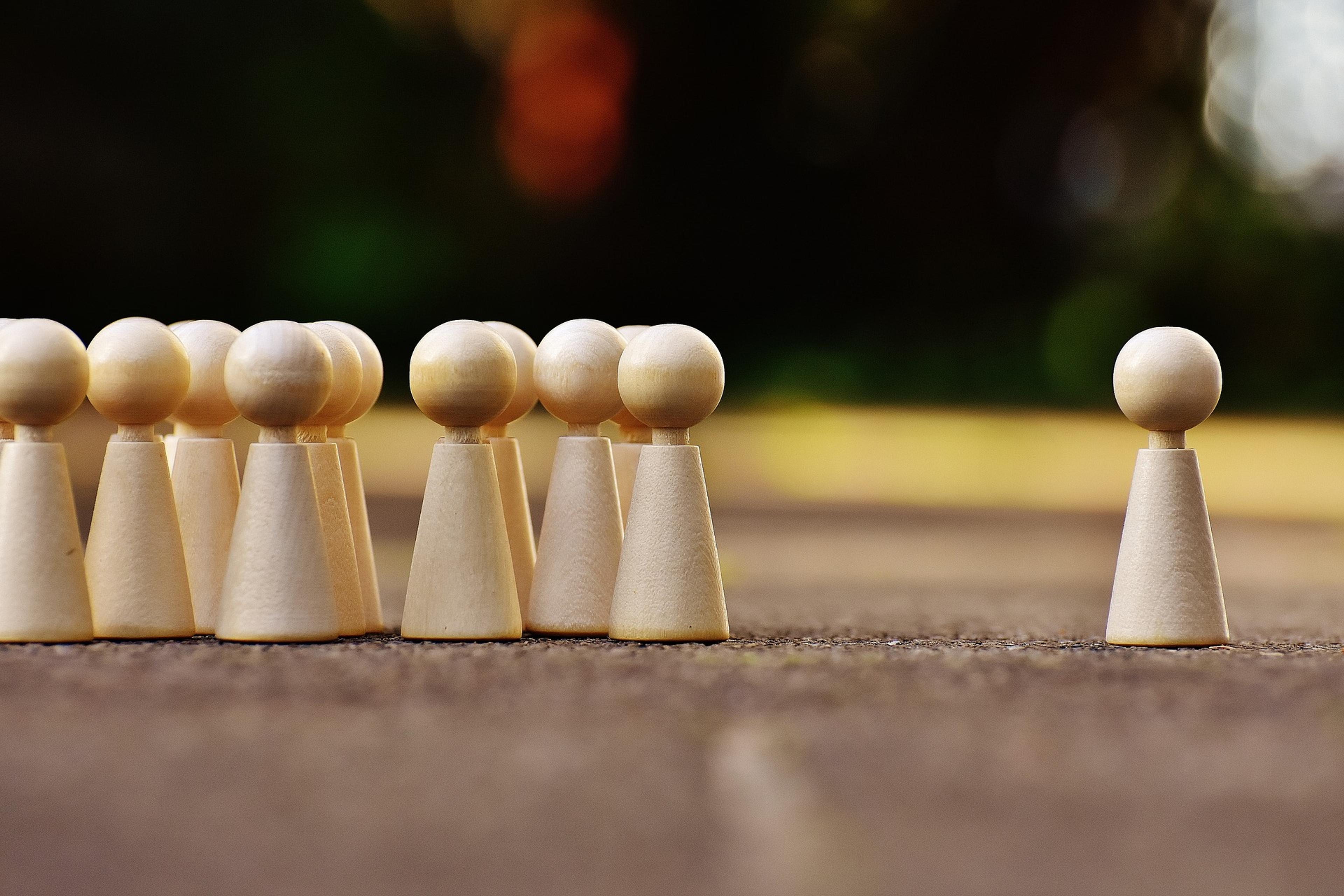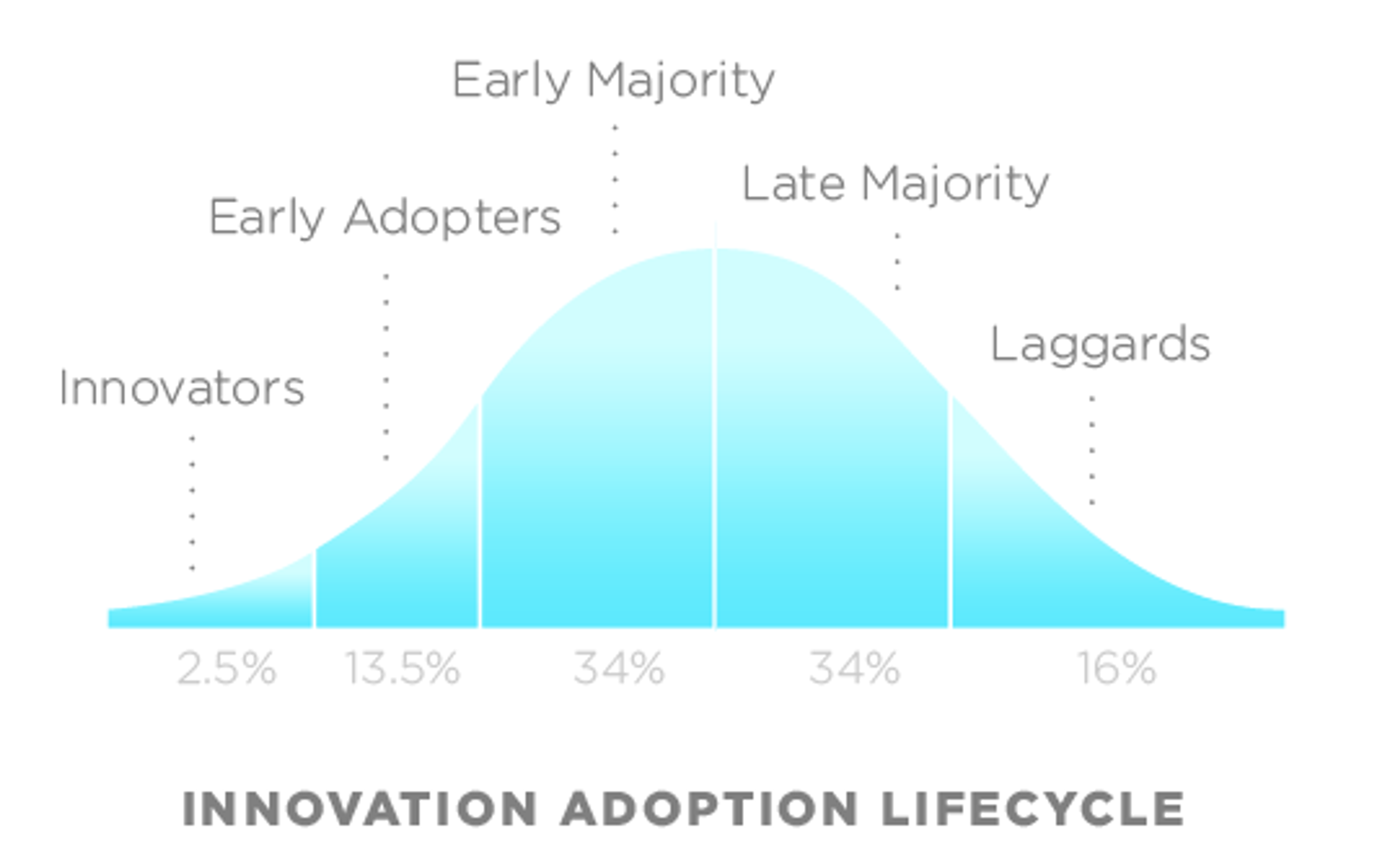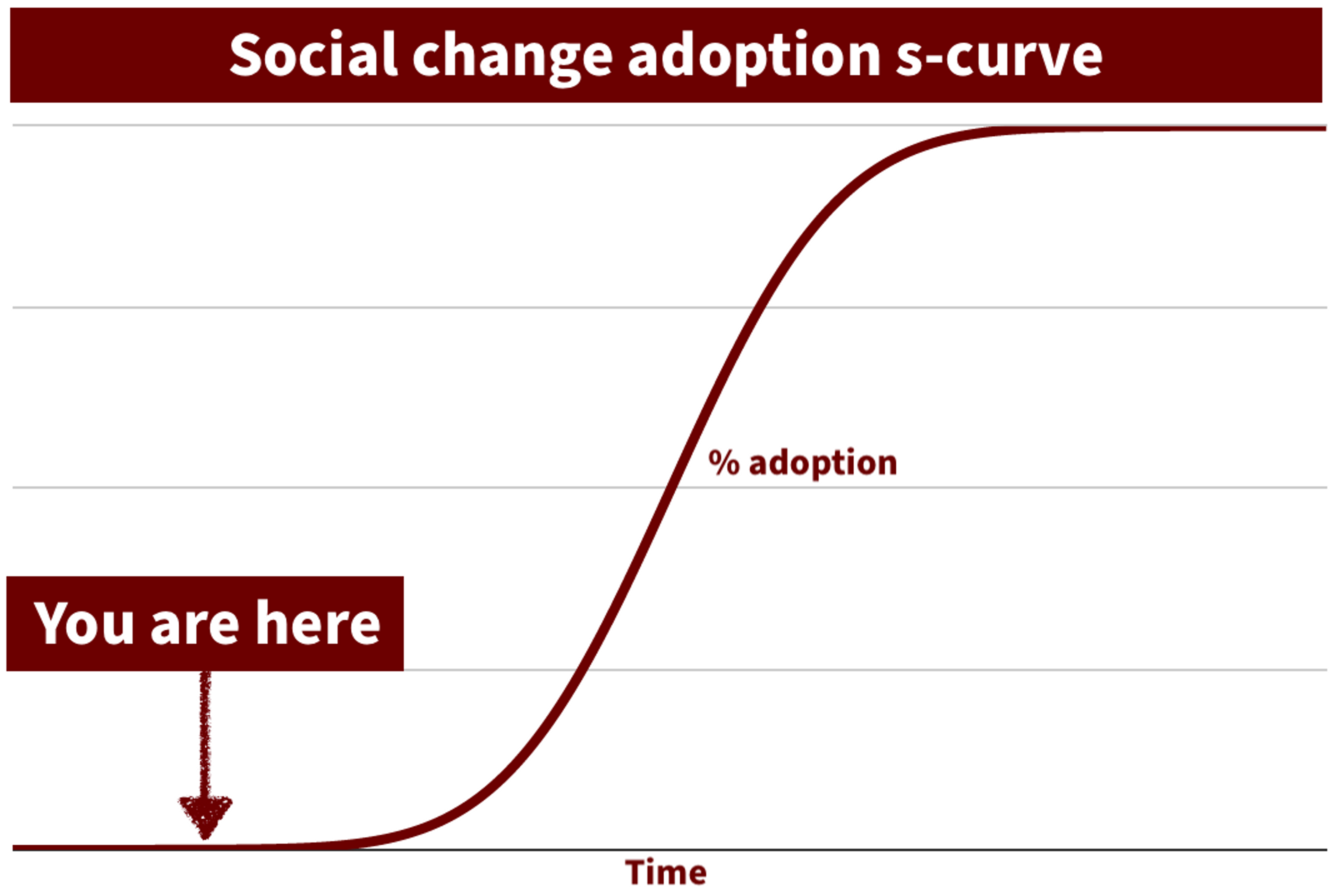How does change happen? The power of social proof in behaviour change & successful movement growth
Most of us think that the world would be much better if other people changed their behaviour. We might wish others would treat people more kindly, give more to charity, or be more informed voters.

Yet we often neglect to recognise how important our own behaviour is in bringing about these changes.
Humans are incredibly social animals. We do what we see others doing. Not only is this backed up by a lot of scientific evidence, we even have many aphorisms in common parlance that reflect this truth. For example:
“Change happens... one person at a time."
"If not me, then who? If not now, then when?"
"Be the change you want to see in the world."
Some find these adages inspiring, and others might find them cheesy. Personally, I think it’s important to reflect on them, let them sink in, and deeply internalise.
They point to a simple truth that is essential to making the world better: our behaviour influences what other people will do. What we do matters, not just because of the direct outcomes but also because of how it influences other people.
In psychology and sociology this idea has been formalised by the phenomena of social proof and social norms.
Social proof
The psychological and social phenomenon of social proof shows how people copy the behaviour of others. People are more likely to do things if they see others doing it. The term was coined by Robert Cialdini in his 1984 book "Influence" and is commonly used in marketing (e.g. reviews on websites, celebrity endorsements).
One of my favourite videos about how social proof relates to social change is the "first follower" video, popularised by Derek Silver's TED talk.
It demonstrates the power of being an early adopter who's willing to take risks. You de-risk and normalise the path forward for others:
"As more people join in, it's less risky. So those that were sitting on the fence before now have no reason not to. They won't stand out, they won't be ridiculed, but they will be part of the in-crowd if they hurry. "
Social norms
Social norms take the idea of social proof a step further, into the territory of what is considered normal or acceptable behaviour. It is what we think is expected of us -- it's what a "good person" within a community is expected to do. This representation is shaped by what we believe most people are doing or thinking.
My favourite book on social change is "How Change Happens" by Cass Sunstein. Sunstein focuses on the crucial role of social norms and how nudging people in one direction can result in a social cascade.
Creating social cascades require us to take a risk. Publicly revealing our preferences can be scary, and occasionally costly. However, these fears are often overblown. The personal consequences are rarely as negative as we expect, and more often than not, they are positive.
Social proof helps shift social norms
The Giving What We Can (GWWC) community is an excellent example of using these ideas to create change.
GWWC members make public commitments to donate a portion of their incomes to the most effective charities.
Many people can make an extraordinary impact in the world by donating to effective charities, but why go further and make a public pledge?
The theory is that if we want other people to value compassion for others and a commitment to impact then we can speed up the process by taking the first step ourselves (and doing it publicly).
Remember here that "other people" aren't just individuals -- they are also part of our governments, philanthropists, and companies. The world is made up of individual people who respond to social norms. What we do and say really matters, and it has flow-on effects on those around us, and to the rest of the world.
Overcoming barriers to change
Three big barriers to change are often:
- Awareness: are people aware of the thing
- Aspiration: do they want to do the thing
- Accessibility: are they able to do the thing
Social proof is one of the most significant factors in both awareness (helping people know about something) and aspiration (helping them want it for themselves). It even plays a role in accessibility (once something is normalised, it is often made more accessible).
In this 80,000 Hours interview, Cass Sunstein gives a great example:
"I'll give you a little study from Saudi Arabia, which is that Saudi men, by custom, have authority over whether their wives work outside the home. Most young Saudi men actually think it's fine that their wives work outside of the home, but most young Saudi men think that most other young Saudi men think it's not fine. They think they're isolated in their openness to wives working outside of the home.
In the experiment, once Saudi men were informed that most Saudi men actually think like them, then the number of Saudi women applying to join the workforce grew dramatically four months later. That was a research study, not a feminist program. There's a clue there about programs of all sorts."
In this example, it was the silence of the majority that was leading to a world that they didn't want.
Innovation adoption lifecycle
You've probably noticed a phenomenon playing out in the real world where social norms can feel like they change rapidly. First, a small number of people support an idea, it seems to simmer for a while, and you almost forget about it. Suddenly it seems like it's ubiquitous.
For all the years I worked in startups, the innovation adoption lifecycle was always front of mind. Getting your user base beyond just a few very early innovators to the group of early adopters was key -- then you'd be well on your way to the majority.

Suppose you are someone who gets in at the innovators' stage of the adoption lifecycle. In that case, you'll feel like it's taking forever. You'll feel like you've been shouting at everyone with no success. You'll start to think it'll never take off.
But then something happens, and before you know it, it's a success. Not as fast as you initially thought, but much quicker than you were starting to worry.
"When opinions start to change, the change takes up increasing speed toward a much more even division. That is when the topic becomes socially and politically divisive. A majority forms around a new consensus and the pace of change slows again as the most committed supporters of the old view reluctantly come around; some never do. Researchers call this pattern the S-curve or, more properly, the sigmoid."

The reality is we're all active agents in the world. We can all nudge the world towards the world that we want, or sit back and be nudged.
The trap for those who get in early is to get tired.
Don't ever forget that social change is a marathon. Something that seems old to you is just reaching the point of acceptability for the masses. It's the time when endurance is most needed.
Multiply your impact
Advocacy is a way that we can all multiply our impact. For every person that follows our lead, we are multiplying our impact and making it easier for the next person.
Now, it's over to you.
What change do you want to see in the world? And, more importantly, what are you going to do about it?
If you're someone who wants to inspire donations to the world's most effective organisations we encourage you to start advocating for effective giving (try these simple, easy advocacy ideas!).